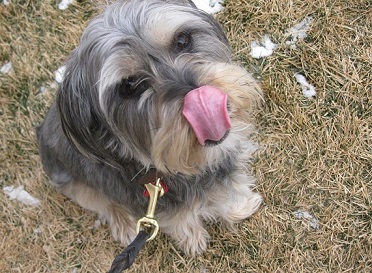Dogs love a routine.
When a dog has a predictable routine, he can relax.
I love taking in a new foster dog, finding that routine and watching him settle in. I love watching him become himself.
Most of you probably know what I’m talking about. Experienced dog owners understand how a regular routine helps a dog settle in. A regular routine helps prevent behavioral problems.
When I adopted my dog Ace, he desperately needed a routine. He didn’t know his name. He’d never been on a walk. He was a year old and still didn’t know “sit” or “down.” He was cared for in his previous home, but without a routine his mind and body were pure chaos.
So I gave him a routine. He needed that more than anything else.
The most important part of that routine was a 60-minute walk or run every single morning. Ace very quickly calmed down, settled in, began to relax and focus. I watched my dog become himself.
[quote_center]“The most important part of that routine was a 60-minute walk or run every single morning.”[/quote_center]
But how can we effectively explain to new dog owners the importance of a routine?
How can we encourage a routine for people who foster dogs?
No matter how loving the home is, the last thing a foster dog needs is a chaotic environment with no structure, right?
So, every time I take in a foster dog, I plan what that routine will be.
It goes something like this:
Sample routine for a new dog
[check_list]
- 6:30 a.m., wake up and head out for long walk (at least 45 minutes), work on basic training during walk
- Breakfast and then another quick potty break
- 8 a.m. to noon, time in crate with multiple puzzle toys while I work (blogging or walking client’s dogs)
- noon, potty break and quick 15-minute walk
- 12:30 to 5 p.m., time in crate with new puzzle toys or hang out quietly in my office with me
- 5:30 p.m., long walk (at least 60 minutes), usually with Ace and the foster dog together
- 6:30 p.m., dinner and quick potty break
- Time out of the crate to play, relax, hang out
- 9:30 p.m., last potty break
- 10 p.m., back in the crate for bed
[/check_list]

Of course, every dog is different and this is just a sample. Older dogs may not need a crate. Younger dogs may need more potty breaks. Some dogs may need a longer walk at noon. A few will do OK with shorter walks.
But no matter what the dog’s routine is, it absolutely needs to be centered around structured exercise, basic training and time to relax.
Love and affection are important, too, but those come naturally. What I really focus on is providing that much-needed exercise, training and down time. I think we tend to underestimate all three of those.
Structured exercise. Basic training. Quiet time to relax.
It usually takes a new dog about three days to settle in. The routine creates predictability, comfort, expectations and the opportunity for reward. It leaves little opportunity for the dog to fail.
Since I am also a creature of habit, I thrive on a routine too. A routine makes me feel successful and secure.
Creating a routine is the best way I know how to communicate to a new dog that everything will be OK. From there, we can add more training, more bonding, more affection, more love.
Can you tell I have foster fever? 🙂
What is the most important part of your dog’s routine?
Get That Mutt’s newsletter in your inbox:

Linda - Alfie's Blog
Wednesday 5th of February 2014
Our routine is 1. breakfast 2. five minute potty walk 3. Alfie snoozing/supervising while I work 4. Midday long walk 5. Sometimes training, otherwise more snoozing 6. Dinner 7. Final potty walk.
Of course this was very different when Alfie was a pup and needed lots of potty breaks and lots of small walks and brain games to keep him out of trouble :-)
Dawn
Tuesday 4th of February 2014
We don't have a walk routine, but we should. Maya and Pierson definitely have a potty, breakfast, potty, potty, dinner, potty routine!
Jessica
Tuesday 4th of February 2014
Great post! I know my dog knows her routine. The most important part of her routine is to run every night for at least 45 minutes, often much longer. Even if she goes to day care all day, she gets antsy at night if we don't go for our run. Also, she's figured out the weekends, or at least days when we're home all day, and she knows those days mean a long run in the morning. I can't touch my running clothes til i'm good and ready to go for a run.
Aisling
Tuesday 4th of February 2014
Chip is in a routine and has been since I got her at 3 months old. The only downfall is Chip now knows her routine SO well that I cant get away with skipping a walk or even delaying it 30 mins. Chip will leave me alone for 10/15 mins after I get in from work. Then she is at the door by her lead whining and waiting to go and wont give up until she gets that evening walk!
Elizabeth
Monday 3rd of February 2014
The funny thing about a routine is, sometimes they wont do it for another person in the house. My fiance and I have different sleep patterns. If he's up before me and wants to take the dogs out, they wont get up! However, once I start stirring in the morning, they are ready to go! One of those quirky things I love about my dogs!